Chrysler 2013 Annual Report Download - page 358
Download and view the complete annual report
Please find page 358 of the 2013 Chrysler annual report below. You can navigate through the pages in the report by either clicking on the pages listed below, or by using the keyword search tool below to find specific information within the annual report.-
 1
1 -
 2
2 -
 3
3 -
 4
4 -
 5
5 -
 6
6 -
 7
7 -
 8
8 -
 9
9 -
 10
10 -
 11
11 -
 12
12 -
 13
13 -
 14
14 -
 15
15 -
 16
16 -
 17
17 -
 18
18 -
 19
19 -
 20
20 -
 21
21 -
 22
22 -
 23
23 -
 24
24 -
 25
25 -
 26
26 -
 27
27 -
 28
28 -
 29
29 -
 30
30 -
 31
31 -
 32
32 -
 33
33 -
 34
34 -
 35
35 -
 36
36 -
 37
37 -
 38
38 -
 39
39 -
 40
40 -
 41
41 -
 42
42 -
 43
43 -
 44
44 -
 45
45 -
 46
46 -
 47
47 -
 48
48 -
 49
49 -
 50
50 -
 51
51 -
 52
52 -
 53
53 -
 54
54 -
 55
55 -
 56
56 -
 57
57 -
 58
58 -
 59
59 -
 60
60 -
 61
61 -
 62
62 -
 63
63 -
 64
64 -
 65
65 -
 66
66 -
 67
67 -
 68
68 -
 69
69 -
 70
70 -
 71
71 -
 72
72 -
 73
73 -
 74
74 -
 75
75 -
 76
76 -
 77
77 -
 78
78 -
 79
79 -
 80
80 -
 81
81 -
 82
82 -
 83
83 -
 84
84 -
 85
85 -
 86
86 -
 87
87 -
 88
88 -
 89
89 -
 90
90 -
 91
91 -
 92
92 -
 93
93 -
 94
94 -
 95
95 -
 96
96 -
 97
97 -
 98
98 -
 99
99 -
 100
100 -
 101
101 -
 102
102 -
 103
103 -
 104
104 -
 105
105 -
 106
106 -
 107
107 -
 108
108 -
 109
109 -
 110
110 -
 111
111 -
 112
112 -
 113
113 -
 114
114 -
 115
115 -
 116
116 -
 117
117 -
 118
118 -
 119
119 -
 120
120 -
 121
121 -
 122
122 -
 123
123 -
 124
124 -
 125
125 -
 126
126 -
 127
127 -
 128
128 -
 129
129 -
 130
130 -
 131
131 -
 132
132 -
 133
133 -
 134
134 -
 135
135 -
 136
136 -
 137
137 -
 138
138 -
 139
139 -
 140
140 -
 141
141 -
 142
142 -
 143
143 -
 144
144 -
 145
145 -
 146
146 -
 147
147 -
 148
148 -
 149
149 -
 150
150 -
 151
151 -
 152
152 -
 153
153 -
 154
154 -
 155
155 -
 156
156 -
 157
157 -
 158
158 -
 159
159 -
 160
160 -
 161
161 -
 162
162 -
 163
163 -
 164
164 -
 165
165 -
 166
166 -
 167
167 -
 168
168 -
 169
169 -
 170
170 -
 171
171 -
 172
172 -
 173
173 -
 174
174 -
 175
175 -
 176
176 -
 177
177 -
 178
178 -
 179
179 -
 180
180 -
 181
181 -
 182
182 -
 183
183 -
 184
184 -
 185
185 -
 186
186 -
 187
187 -
 188
188 -
 189
189 -
 190
190 -
 191
191 -
 192
192 -
 193
193 -
 194
194 -
 195
195 -
 196
196 -
 197
197 -
 198
198 -
 199
199 -
 200
200 -
 201
201 -
 202
202 -
 203
203 -
 204
204 -
 205
205 -
 206
206 -
 207
207 -
 208
208 -
 209
209 -
 210
210 -
 211
211 -
 212
212 -
 213
213 -
 214
214 -
 215
215 -
 216
216 -
 217
217 -
 218
218 -
 219
219 -
 220
220 -
 221
221 -
 222
222 -
 223
223 -
 224
224 -
 225
225 -
 226
226 -
 227
227 -
 228
228 -
 229
229 -
 230
230 -
 231
231 -
 232
232 -
 233
233 -
 234
234 -
 235
235 -
 236
236 -
 237
237 -
 238
238 -
 239
239 -
 240
240 -
 241
241 -
 242
242 -
 243
243 -
 244
244 -
 245
245 -
 246
246 -
 247
247 -
 248
248 -
 249
249 -
 250
250 -
 251
251 -
 252
252 -
 253
253 -
 254
254 -
 255
255 -
 256
256 -
 257
257 -
 258
258 -
 259
259 -
 260
260 -
 261
261 -
 262
262 -
 263
263 -
 264
264 -
 265
265 -
 266
266 -
 267
267 -
 268
268 -
 269
269 -
 270
270 -
 271
271 -
 272
272 -
 273
273 -
 274
274 -
 275
275 -
 276
276 -
 277
277 -
 278
278 -
 279
279 -
 280
280 -
 281
281 -
 282
282 -
 283
283 -
 284
284 -
 285
285 -
 286
286 -
 287
287 -
 288
288 -
 289
289 -
 290
290 -
 291
291 -
 292
292 -
 293
293 -
 294
294 -
 295
295 -
 296
296 -
 297
297 -
 298
298 -
 299
299 -
 300
300 -
 301
301 -
 302
302 -
 303
303 -
 304
304 -
 305
305 -
 306
306 -
 307
307 -
 308
308 -
 309
309 -
 310
310 -
 311
311 -
 312
312 -
 313
313 -
 314
314 -
 315
315 -
 316
316 -
 317
317 -
 318
318 -
 319
319 -
 320
320 -
 321
321 -
 322
322 -
 323
323 -
 324
324 -
 325
325 -
 326
326 -
 327
327 -
 328
328 -
 329
329 -
 330
330 -
 331
331 -
 332
332 -
 333
333 -
 334
334 -
 335
335 -
 336
336 -
 337
337 -
 338
338 -
 339
339 -
 340
340 -
 341
341 -
 342
342 -
 343
343 -
 344
344 -
 345
345 -
 346
346 -
 347
347 -
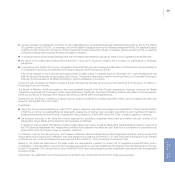 348
348 -
 349
349 -
 350
350 -
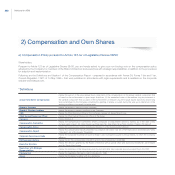 351
351 -
 352
352 -
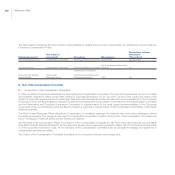 353
353 -
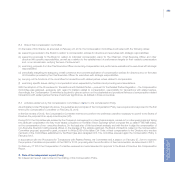 354
354 -
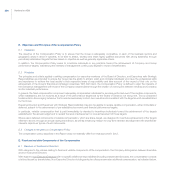 355
355 -
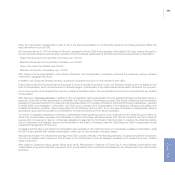 356
356 -
 357
357 -
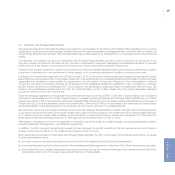 358
358 -
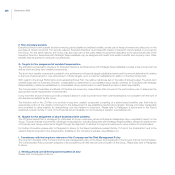 359
359 -
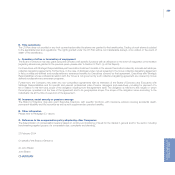 360
360 -
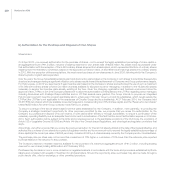 361
361 -
 362
362 -
 363
363 -
 364
364 -
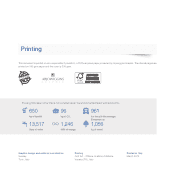 365
365 -
 366
366
 |
 |

357
Auditors’ Reports and
Motions for AGM
E.3 Executives with Strategic Responsibilites
The same principles and criteria described above are applied to compensation for Executives with Strategic Responsibilities for the purpose
of attracting, incentivizing and retaining highly-qualified personnel through compensation packages that are competitive with the market and
recognize key attributes such as merit, demonstrated leadership and the impact of an individual’s role on the achievement of Group financial
targets.
The standard compensation structure for Executives with Strategic Responsibilities provides a fixed component as well as short and
long-term variable components. As stated above, the fixed compensation component adequately compensates individuals for services
performed even if the variable components are not received as a result of performance targets not being met.
The short-term variable component is subject to the achievement of financial targets established yearly and the amount determined in relation
to the level of achievement or over-achievement of those targets, up to a maximum established in relation to the fixed component.
Following to the shareholders’ approval of the LTI Plan on April 4, 2012, the long-term variable component consists of share-based incentive
plans that link an appropriate portion of the variable component to the achievement of pre-established performance targets, that are concretely
measurable and correlated to value creation for shareholders over the medium to long term. Payment of this compensation is deferred
through the cliff vesting mechanism following the achievement of the established targets and satisfaction of the conditions for continued
service. Another component is the Retention LTI, which is linked to the beneficiary’s continuing professional relationship with the Group. The
selection of the beneficiaries is attributed to the CEO. For more information on the LTI Plan, please refer to the ad hoc Resolution published
pursuant to Article 114-bis of the Financial Act.
Given the changing organization and business environment since the approval of the LTI Plan, in 2013 the Company elected not to utilize the
authorization contemplated by the LTI Plan regarding senior managers including Executives with Strategic Responsibilities and no LTI Plan
awards were granted. The Group intends to propose an integrated Fiat-Chrysler long term incentive program applicable also to employees of
Chrysler Group LLC and its subsidiaries, which would replace the LTI Plan (the LTI Plan is not applicable to the employees of Chrysler Group
and its subsidiaries). At the appropriate time, the Company will submit such new plan for requisite approvals.
As a general principle, the remuneration package of Executives with Strategic Responsibilities consists, inter alia, of the following elements:
(i) a gross annual fixed component; (ii) an annual variable cash component that is based on the achievement of pre-set business objectives;
(iii) a medium-long term equity based variable component (which includes stock options mentioned in Paragraph E.1 above and the
share-based incentives contemplated by the LTI Plan approved by the shareholders on April 4, 2012).
With regard to allowances in the event of resignation or termination as well as health and welfare benefits, including supplementary pension
benefits, please refer to Paragraphs L and M below, respectively.
In addition, the CEO may grant discretionary bonuses to these managers for specific transactions that are deemed exceptional in terms of
strategic importance and effects on the results of the Company and/or the Group.
When setting the compensation of Executives with Strategic Responsibilities, the CEO, on the basis of international benchmarking, considers
the following indicative criteria:
(a) the fixed component generally represents no more than 50% of the targeted Annual Total Direct Compensation;
(b) the annual targeted incentive for Executives with Strategic Responsibilities represents not less than 40% of their fixed gross annual salary;
(c) the medium/long term, variable, target-based annualized component (Long Term Incentive Plans) generally represents at least 50% of the
total variable component of the target-based Annual Total Direct Compensation.
